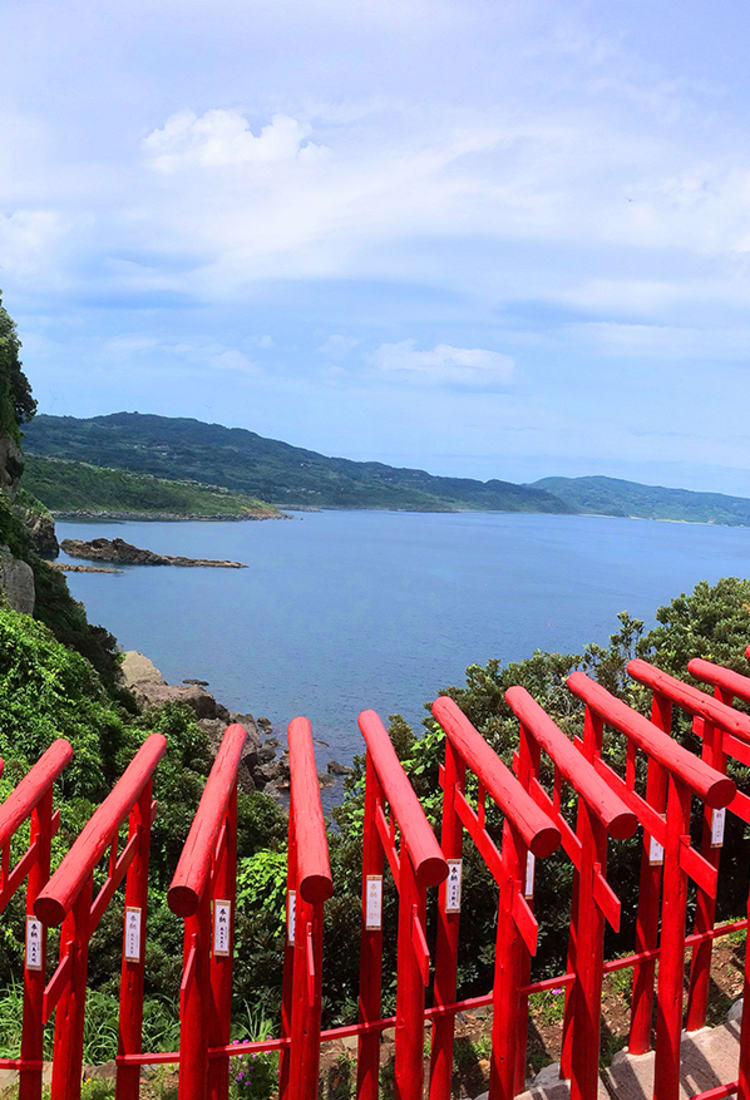
2021.10 Beyond Hiroshima: Exploring the Hidden Treasures of the San’in and San’yo Regions Step off the Golden Route and discover an area rich in nature
Key Image Photo credit: Nagato Tourism Convention Association
Luckily, stepping off the Golden Route isn’t difficult. For instance, those who make it as far as Hiroshima and the popular island of Miyajima are already on the doorstop of the San’in and San’yo regions – the north and south areas respectively of Chugoku. This relatively sparsely populated area of Japan boasts national parks of stunning beauty and variety, including Daisen-Oki National Park and San’inkaigan National Park in the north and Setonaikai National Park in the South.
Whether you’re on the hunt for natural beauty or some cultural draws, the San’in and San’yo regions more than deliver. So, if you ever find yourself in Hiroshima, consider adding any of the prefectures mentioned here to your itinerary!
Yamaguchi: Unique history, culture and nature all within easy reach
Extending all the way to the westernmost extremes of Japan’s main island of Honshu, Yamaguchi Prefecture is home to a wide variety of eclectic attractions. Located to the immediate west of Hiroshima, the prefecture is the easiest to add to standard itineraries in the San’in and San’yo regions.
Visitors traveling to Miyajima should consider traveling on to the town of Iwakuni with its iconic Kintai Bridge. Located just a few stations away from Miyajima, this historic area offers a glimpse of what life would have been like during Japan’s medieval period.
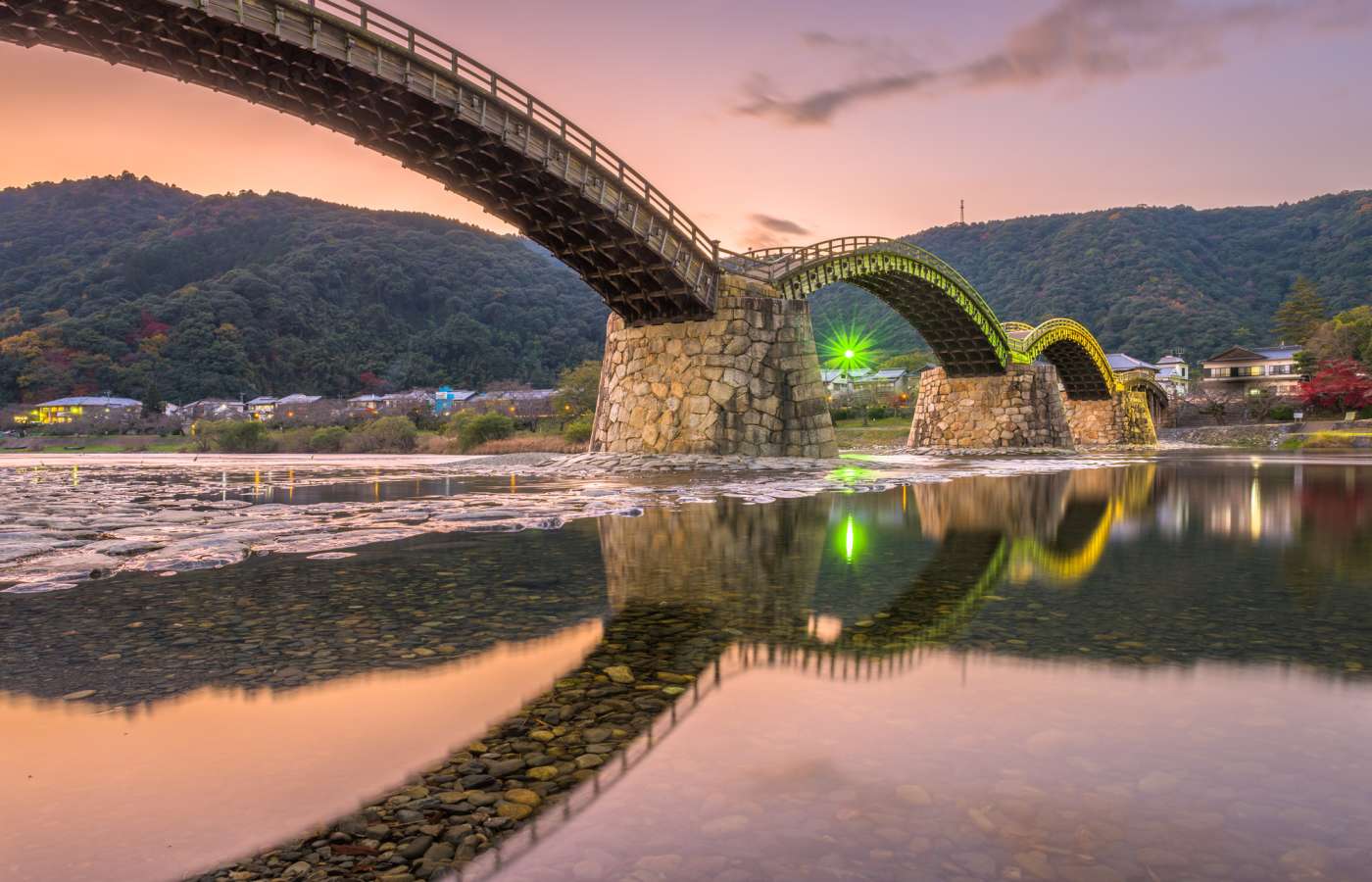
The amazing Kintaikyo Bridge was designed to withstand anything nature could throw at it.
While harder to get to than Iwakuni, the area of Hagi is also worth checking out. Formerly home to one of Japan’s most renowned pottery kilns, Hagi was for centuries also a major political center in the region. Like Iwakuni, Hagi has a well-preserved samurai vibe so be sure to check out the former domiciles.
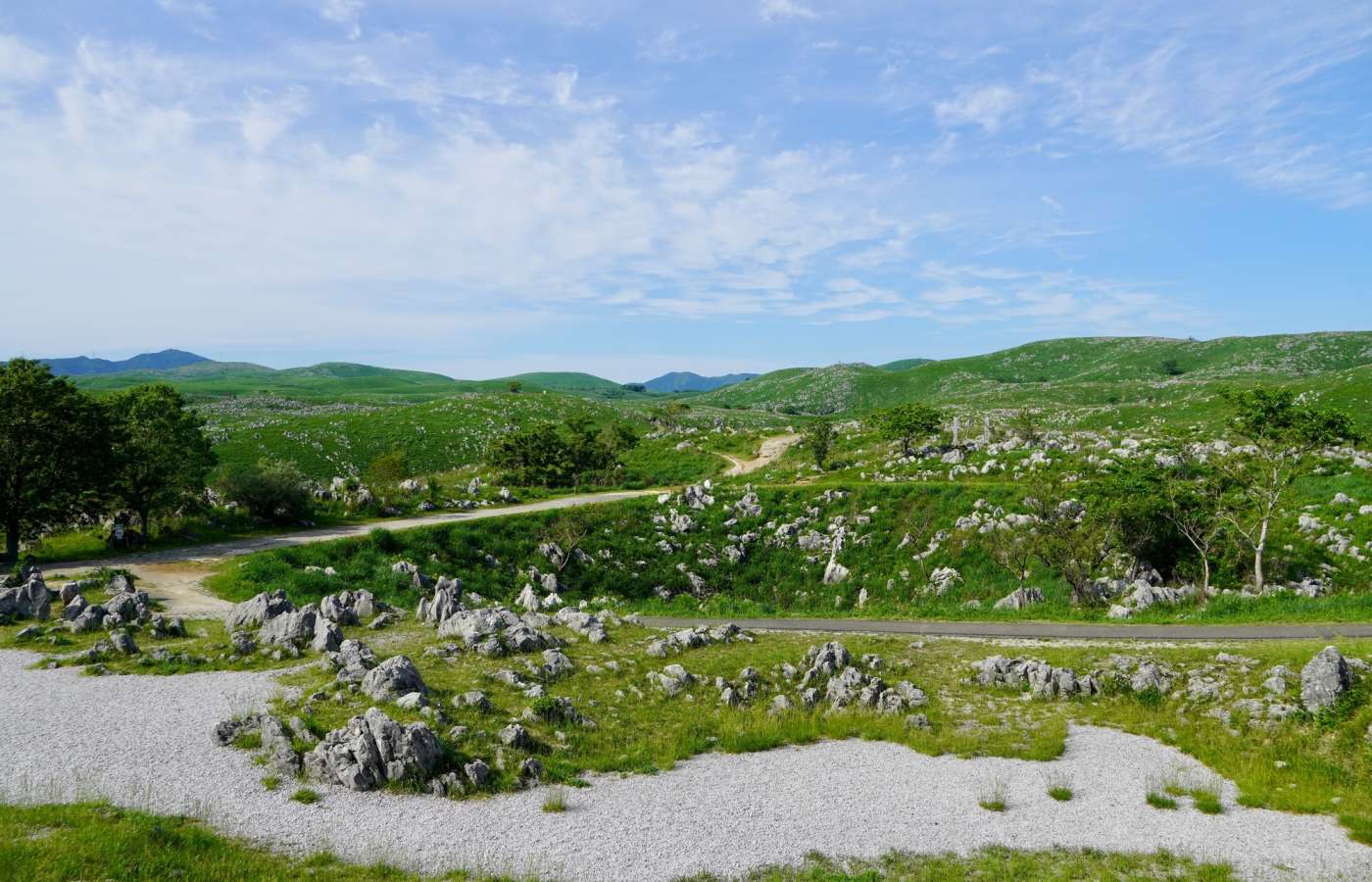
Yamaguchi’s Akiyoshidai offers a range of caves, waterfalls and stunning scenery.
Those looking for something a little more niche should consider heading on over to the seaside Motonosumi-jinja Shrine. Here, you’ll encounter the photogenic series of torii pictured at the start of this article.
The Akiyoshidai Quasi-National Park is an expanse of grassland and limestone rock formations crisscrossed with hiking trails and with a scenic road that winds north/south through the length of the park. As majestic as the rolling landscape is, most people come to visit the gigantic limestone caverns that lie beneath. Extending almost 9 kilometers underground and up to 100 meters wide in places, the Akiyoshido Cave is Japan’s largest limestone cave system. Various tours are available for you to learn more about the fascinating and awesome geology of the area.
Shimane: Scenic island chains and mountain myths
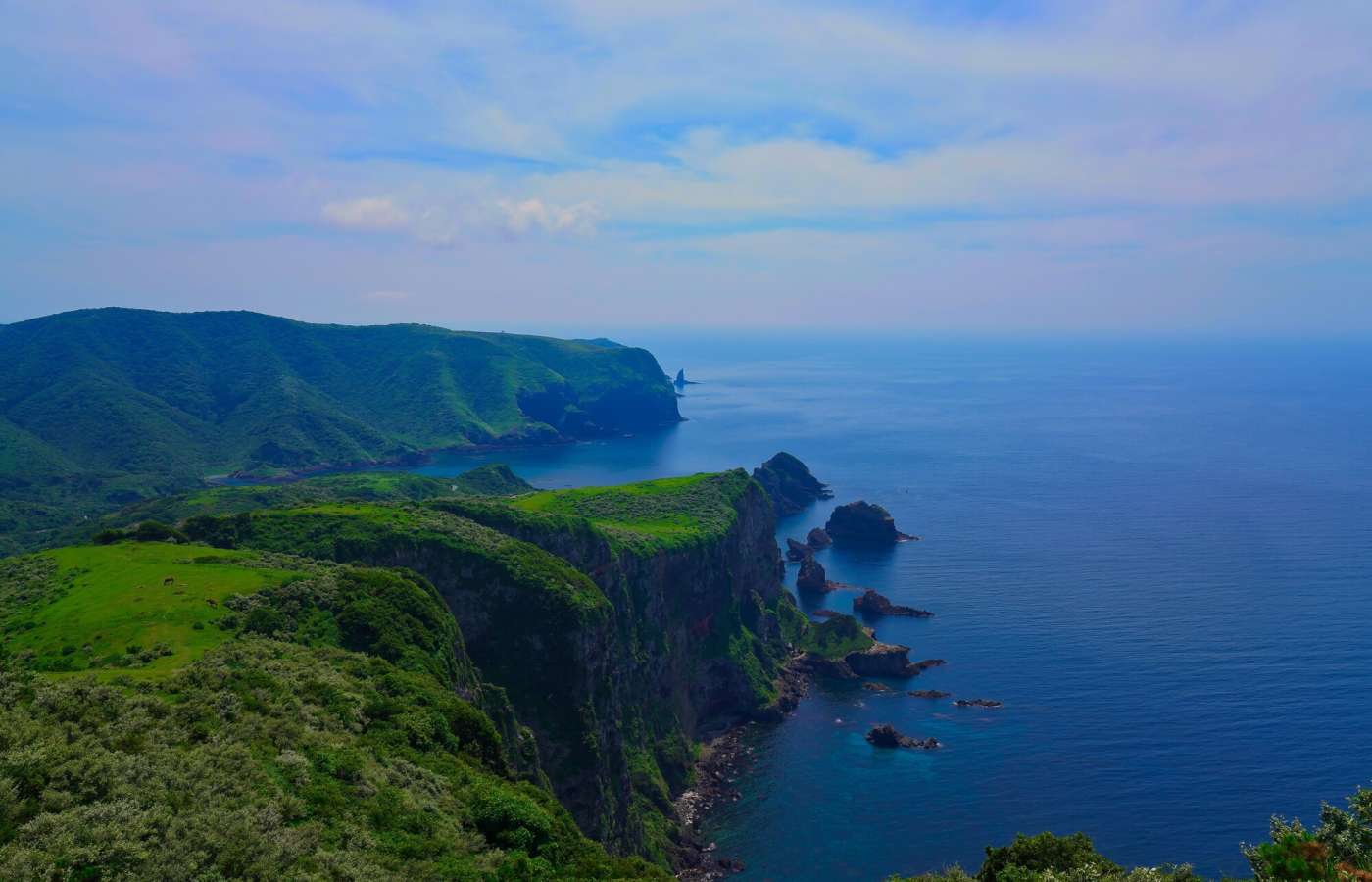
Shimane’s Oki Islands provide no end of activities, coupled with unparalleled views.
Shimane Prefecture is host to some amazing natural wonders. The Oki Islands comprise some 180 islands and islets within the Daisen-Oki National Park. Situated just off the coast of Shimane, this remote but beautiful archipelago—once used to exile unwanted aristocrats—is now registered as a UNESCO Global Geopark.
If you’re intending to check out the Oki Islands, you’d do well to plan for a few days as they are best explored at a leisurely pace. You’ll also want to have access to a rental car while visiting. When exploring the Oki Islands’ rocky coasts and rolling hills, keep an eye out for the semi-wild horses and cattle that roam about! And don’t miss the 257-meter-high Matengai Cliff with commanding views over the neighboring islands.
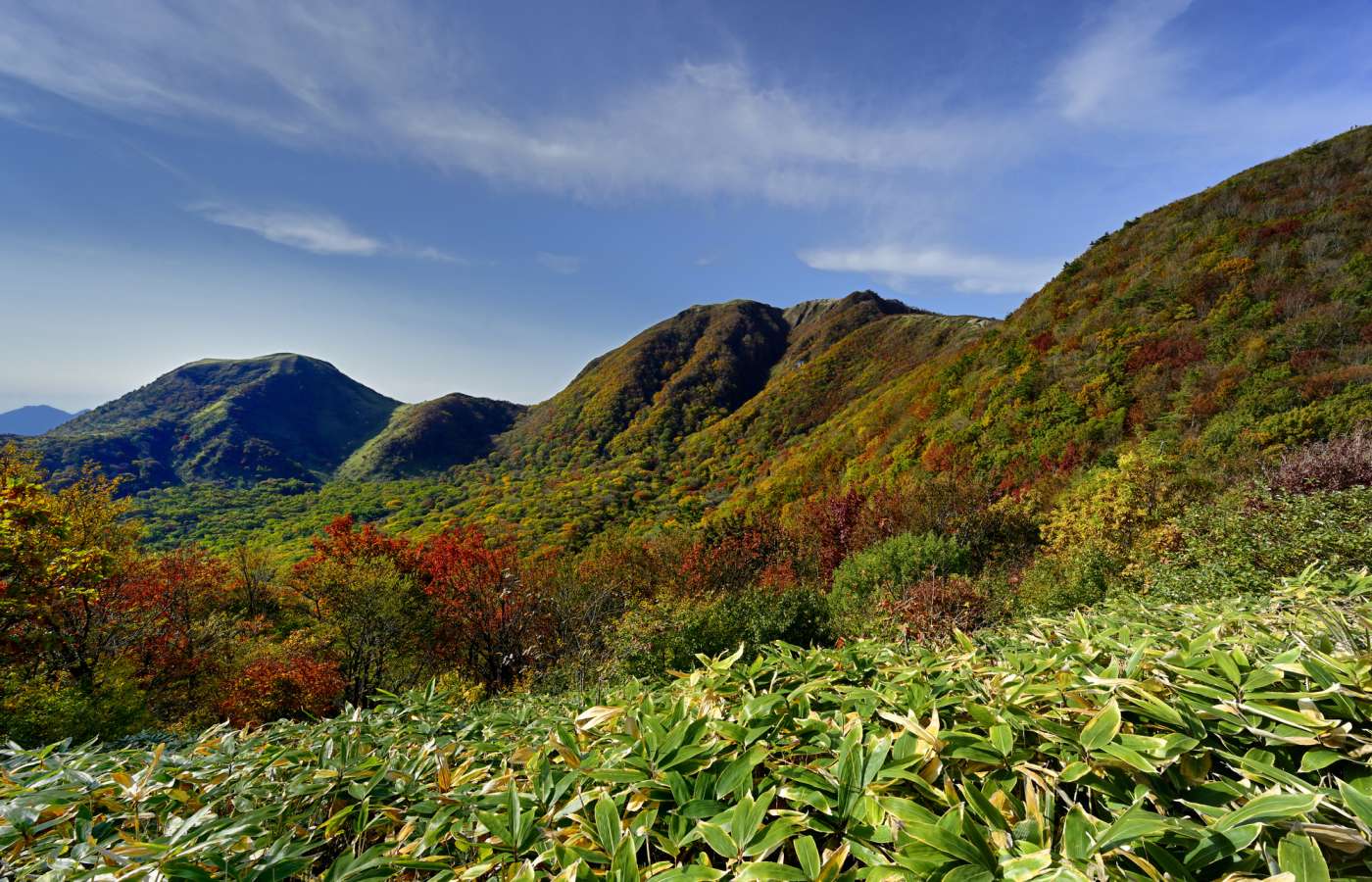
Though remote, the inner areas of Shimane are blessed with natural beauty.
The Oki Islands are not the only thing on offer when it comes to nature in Shimane. If you head south, you’ll come to Okuizumo. Considered to be the site of some of Japan’s earliest myths, Okuizumo is also home to Mt. Hiba. This peak is great for winter sports (just watch out for the Hibago—a Japanese yeti) and makes for a wonderful hike during summer.
Mt. Sanbe is a volcanic crag in central Shimane. The peak has been active since as long as 100,000 years ago and continues to grumble to this day.
Okayama: Underground adventures and castles in the sky
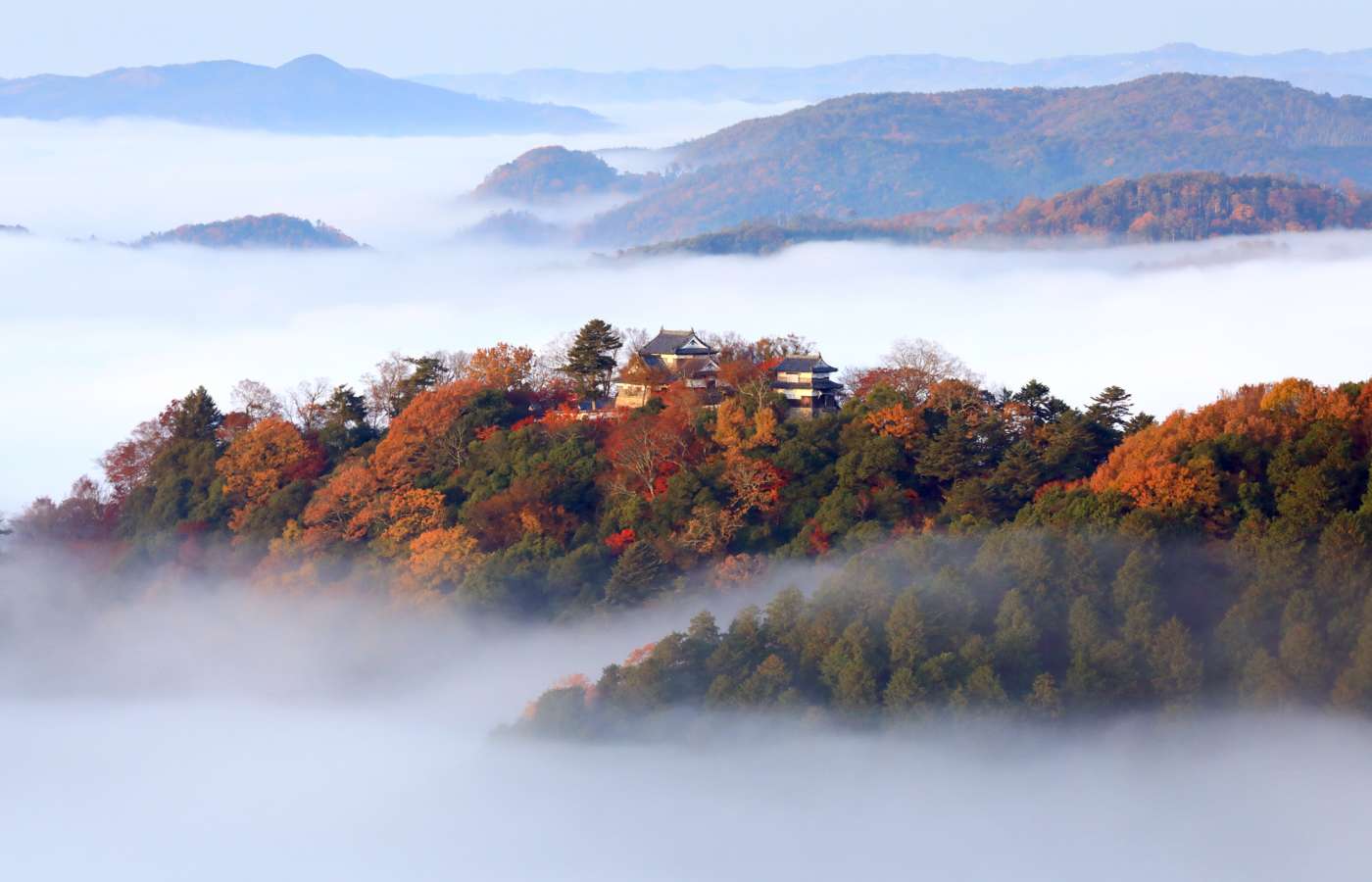
Japan doesn’t get more photogenic than Okayama’s Bitchu-Matsuyama Castle!
Next up on our tour of the San’in and San’yo regions is Okayama. This prefecture is known as the “Land of Sunshine” due to its mild, sunny climate, but there’s more to the prefecture than first meets the eye. From epic views and caves to castles in the sky, Okayama has got it all.
Wait a minute, castles in the sky you say? Well, here you need to note that one of Okayama’s jewels is a stronghold called Bitchu-Matsuyama Castle. Officially one of a dozen remaining historic castles, the fortress is located atop a bluff that towers 430 meters above the surrounding area. In the early mornings of autumn and winter, clouds gather in the basin below giving the impression that Bitchu-Matsuyama Castle is “floating” above the mist.
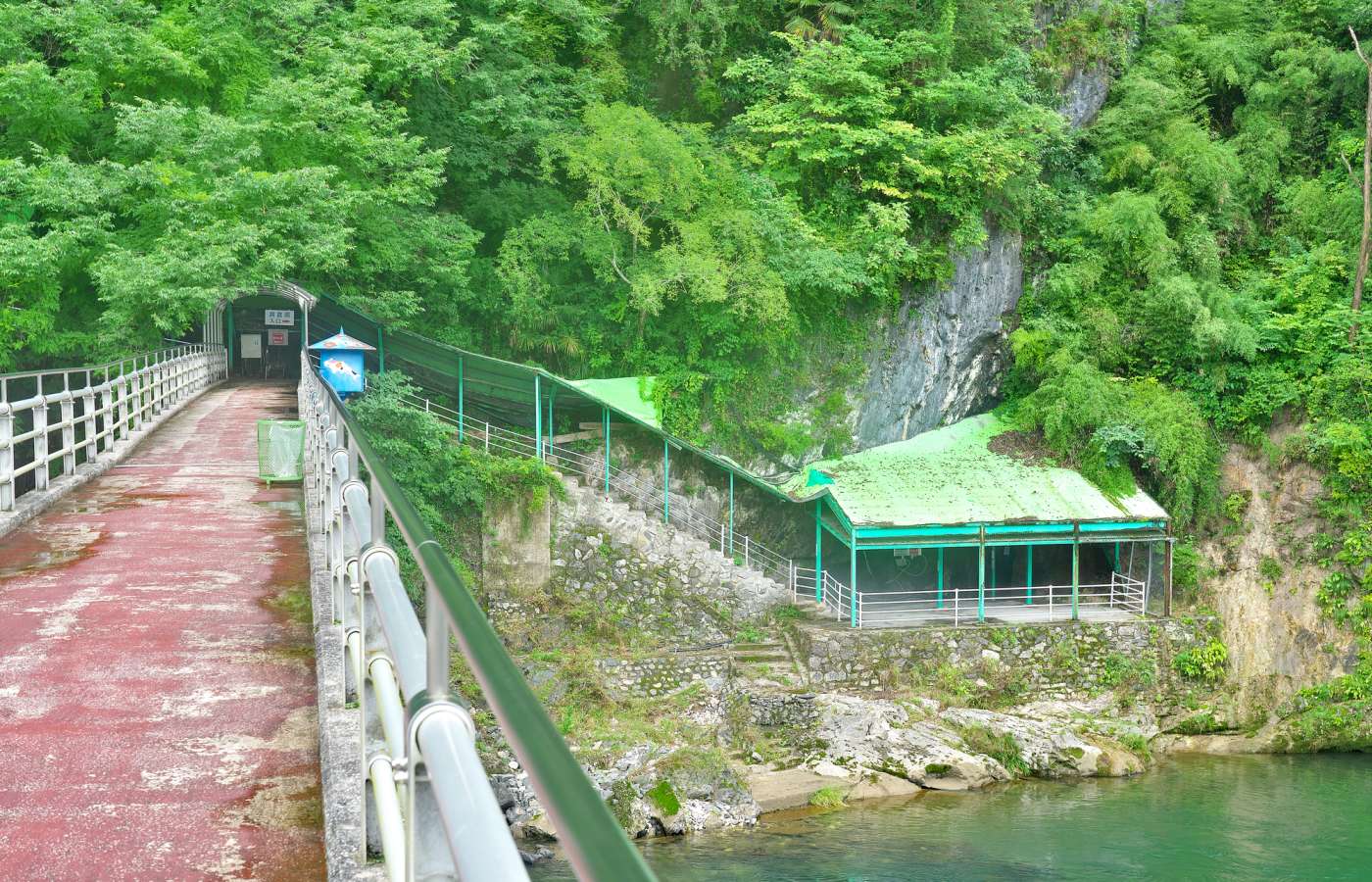
Spelunkers should be sure to check out Ikura Cave.
If you’re in the area, you’d also do well to check out Ikura Cave. In this mysterious limestone cavern, visitors can feel the Earth’s history in every fiber of their being. The 1.2-kilometer-long cave has height variations that range up to 90 meters. Even during the sultry summer months, Ikura Cave remains at a comfortable 15–16°C. By the way, note that this part of Japan is especially beautiful during autumn.
Finally, if you’re looking for one amazing view to round out your trip, check out Mt. Washuzan. From here, you’ll have unobstructed views of the Setonaikai National Park (Japan’s first national park) as well as the Seto Ohashi Bridge. This two-tiered bridge was recently listed in the Michelin Green Guide Japan as the longest of its kind in the world.
Tottori: Sacred mountain climbing and golden sand dunes
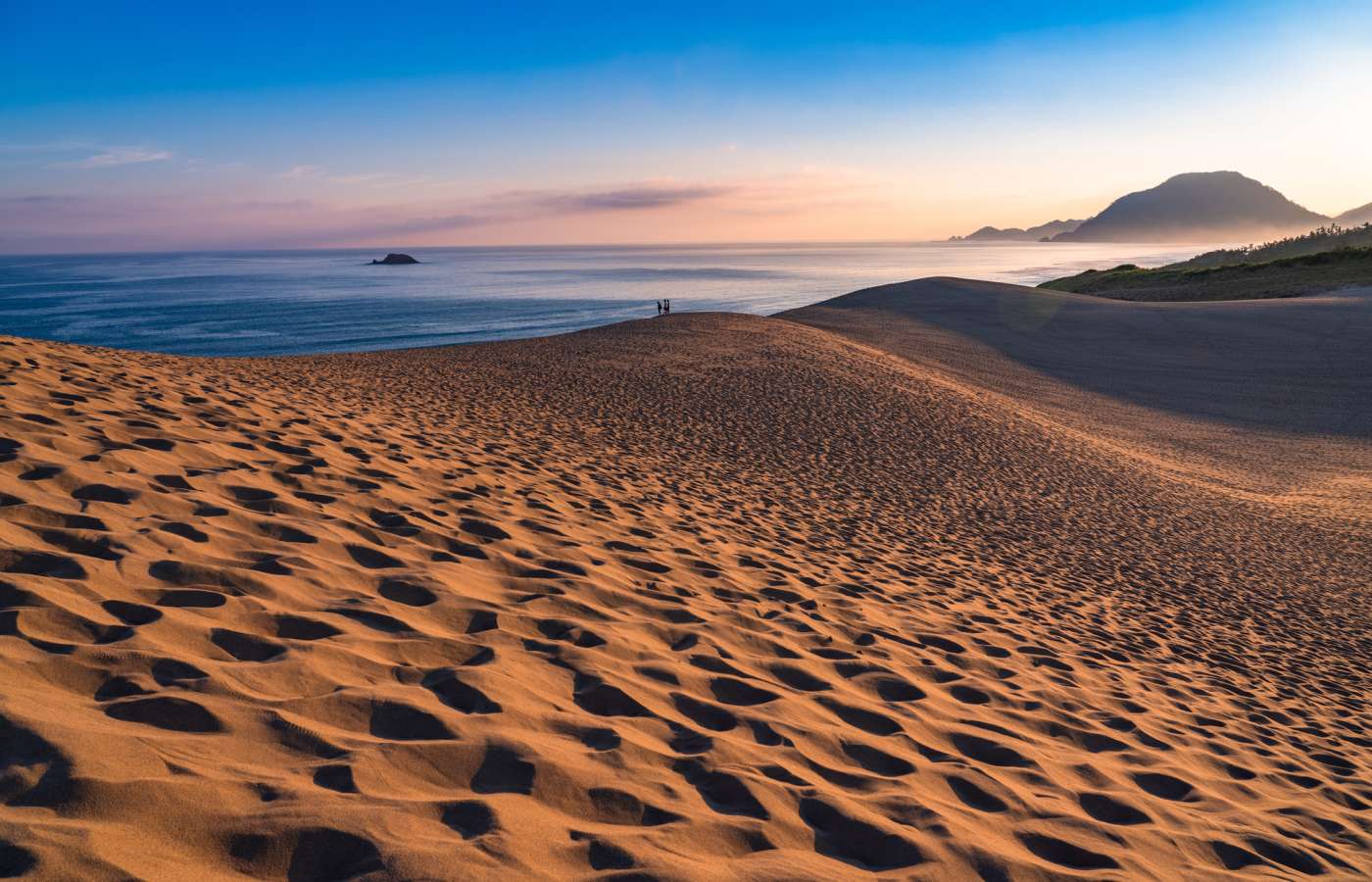
A visit to the Tottori Sand Dunes feels like you’re in the Sahara Desert!
Closing out the San’in and San’yo quadruplet, we have Tottori. No visit to the prefecture would be complete without visiting the Tottori Sand Dunes, one of the main attractions of the San’inkaigan National Park. This 16-kilometer-long expanse of sand was created over the centuries as sediment from the Sendaigawa River washed out to sea only to be redeposited on the coast by the current. Due to the ever-blowing winds, the dunes are always in a state of flux so no two visits will ever be the same.
The most popular stretch of the Tottori Sand Dunes stretches between the visitor center and the shore. Here, you’ll find the largest of the dunes which can grow to be up to 50 meters high. While you’re there, try your hand at paragliding or sandboarding. There’s even a camel ride to enjoy!

Every season offers a new adventure on Tottori’s Mt. Daisen.
In addition to the Tottori Sand Dunes, you’ll also find Mt. Daisen all the way over on the other side of the prefecture. The mountain has long been a spiritual enclave for the practice of mountain asceticism. While you’ll find the trappings of Mt. Daisen’s religious past all over the peak, this mountain also attracts fans of the outdoors: the arduous climb to the top is a favorite among hikers in Japan. And yes, the view from the top is worth the sweat.
Getting off of the beaten path

If you're headed to Hiroshima, stop by the Shinshoji Zen Museum and Gardens to learn more about the practice of Zen.
Photo credit: Shinshoji Zen Museum and Gardens
Hopefully this brief tour of the charms of the San’in and San’yo regions has piqued your interest. While the above only covers the tip of the proverbial iceberg, this part of Japan is chock full of places to visit and enjoy. Should you be planning a trip down to Hiroshima on your next visit to Japan, do yourself a favor and add one or two of these locales to your itinerary.
Business hours
Due to measures to prevent the spread of COVID-19, business hours may be subject to change; please check with the venues before visiting.
Related Links
Akiyoshidai Quasi-National Park |
Daisen-Oki National Park |
San’inkaigan National Park |
Setonaikai National Park |




















































